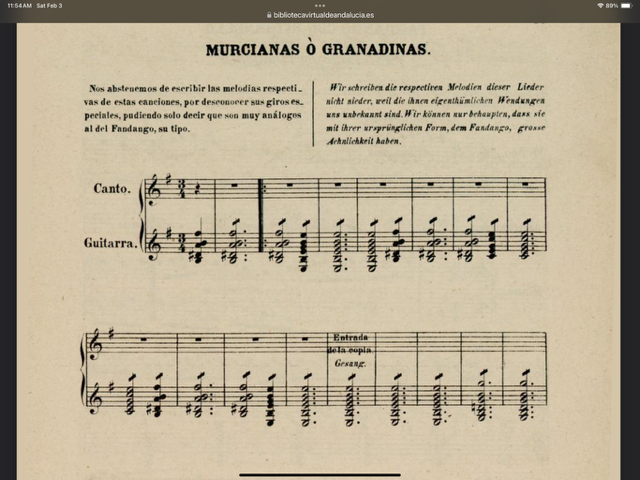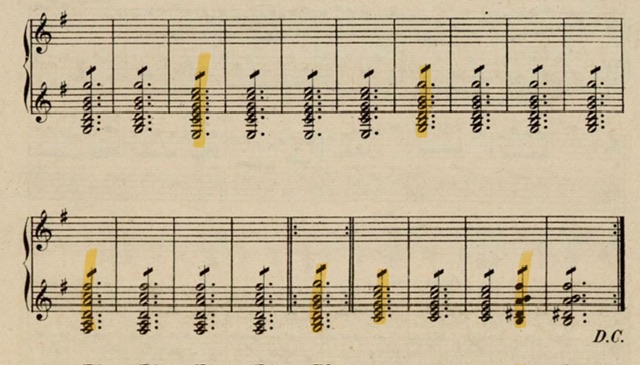|
Norman Paul Kliman -> RE: Claude Worms (Feb. 4 2024 10:26:11)
|
quote:
...I went through your guy’s book...
I won’t vouch for anything there about cantes. My part was the guitar, I did all the work and he didn’t change anything I’d written, as far as I know, but he went kinda nuts with his part and I just stepped away. There’s a reason it’s not mentioned on my website. If anyone wants a PDF copy, just say so and I’ll gladly share.
quote:
...for me it makes total sense that accompanying cantes mineros in Fandangos keys was probably a “thing”, that simply has died out because it was not recorded often.
In the early recordings, cantes mineros were accompanied in E, F sharp and B, whatever fit the singer’s range or maybe for other reasons, but all three keys were used. Montoya, Sabicas and Luis Yance also accompanied in G sharp (minera) and, as you know, Montoya even accompanied with rondeña. It’s not until Niño Ricardo that we start to see a systematic approach of accompanying malagueñas in E (sometimes in F sharp), cantes mineros in F sharp and granaínas in B.
quote:
The recordings are just snap shots in time of the general practices,...
So true. The siguiriya of el Viejo de la Isla and its derivatives are a good example of that. As if they were fashions that came and went. I love (updated) old school singing and playing, but some aficionados might not care for it, just as they wouldn’t dress like their grandfather or drive an antique car.
quote:
Or the competitions like “cante de la Mina” that want to not have much mixing of styles forced a separation from related fandango structures...
Yeah, maybe. It’s my opinion that competitions didn’t have much bearing on the development of singing in general, but maybe they did influence cantes mineros. Those cantes weren’t well developed until the second half of the 20th century, and their champion Antonio Piñana wasn’t a strong enough artist (again, my opinion) to encode them in a way that would catch on and make a lasting impression. At the turn of the century, other styles from western Andalucía were going strong, but insofar as cantes mineros on pre-war recordings, it’s the same two cartageneras over and over, with a few rare appearances of the taranta de la Gabriela. It’s no wonder a puny-sounding singer like Manuel Escacena (specialist in cantes mineros) was held in high regard back then. What I’m trying to say is that external factors (e.g. competitions) might have helped to develop cantes mineros more than internal factors (i.e. communities with generations of professional and non-professional singers).
quote:
By that I mean certain mixing of cantes mineros with both malagueñas and Fandangos.
Malagueñas, yeah, and fandangos de Lucena. Malagueñas were a popular and well-developed style in the late 19th century, with maybe 20 cantes and as many talented specialists and an enthusiastic following. For sure, that momentum carried over into the development of cantes mineros, which might be described as malagueñas with the weird harmonies heard in cantes abandolaos (including fandangos de Lucena). There are specific details, too, like the fourth and fifth sung line in the cartagenera de Rojo el Alpargatero (“Los pícaros tartaneros”) being practically identical to the same parts of the malagueña del Mellizo.
quote:
...long ago, a 4 line verse simply resolved to the Phrygian cadence on the 5th delivered line, where as 5 line verses would go back to major first (6 delivered lines).
This part of your post is dense (or maybe I am this morning). If I’ve understood you correctly, I think something similar happens in the accompaniment of five-verse soleás. Not a fandango sung to soleá rhythm but a soleá sung with a fandango letra. Caracol started it and the Mijitas still do it; guitarists have to wait for another verse to resolve.
quote:
Melchor used to do an early E chord at the start of the 6th line with basic fandangos often (like Caracol examples in Rito),...
I think that move came directly from malagueñas. Not all guitarists do it and I think not all singers are expecting it or even want it. Sounds good when it happens and it works. Since you mention Caracol, I’ll add that he was criticized for just borrowing parts of the malagueña del Mellizo to create his personal fandango. Don’t know if that’s true, but I’ve noticed him steering that way in some recordings. Mairena seems to have been similary drawn to the cante of María Borrico and the toná-liviana when recreating siguiriyas.
|
|
|
|


